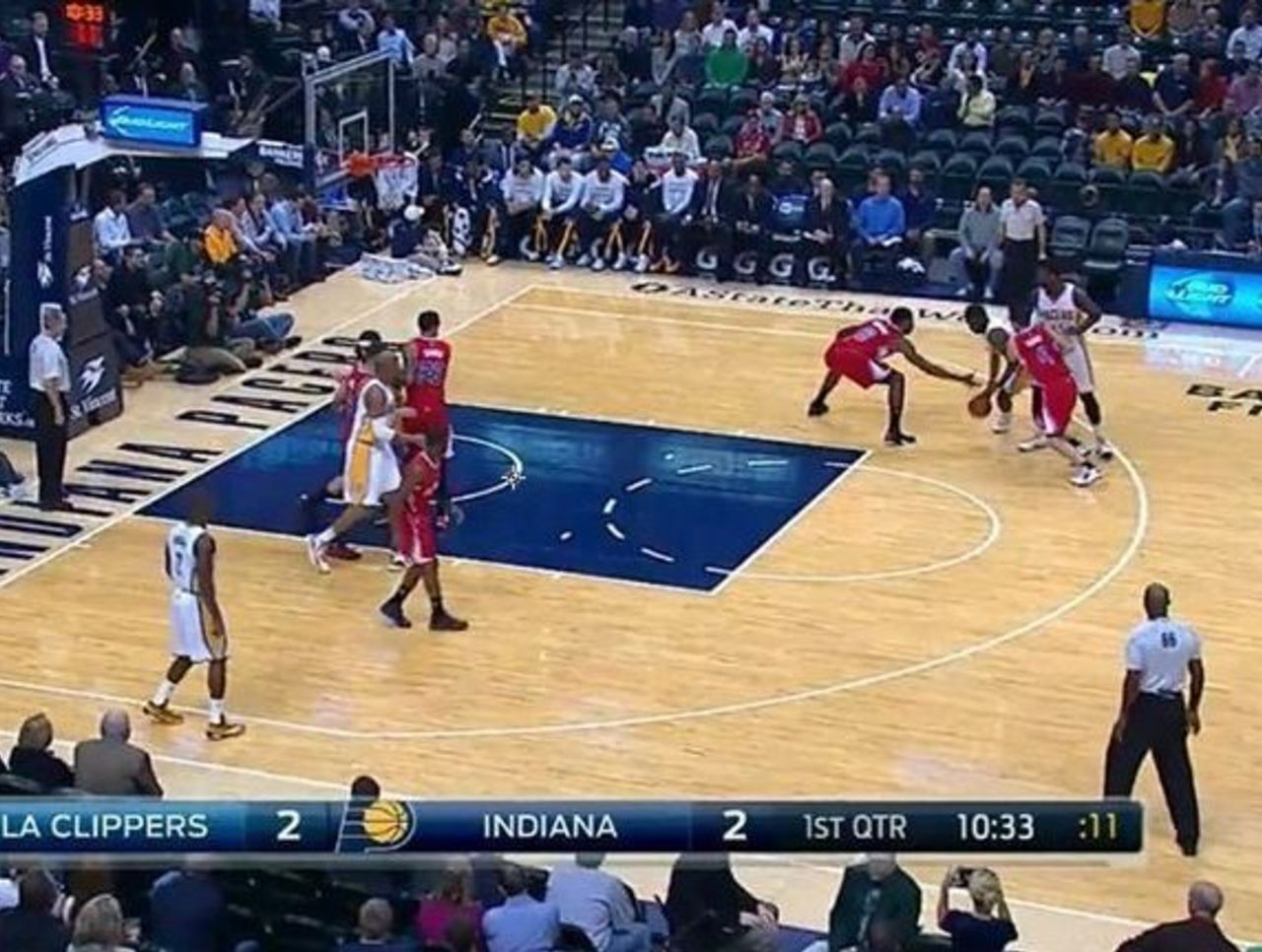Early takeaways from Paul George's position change
After months of speculation, the Indiana Pacers officially kicked off the Paul George at power forward experiment in a preseason game against the New Orleans Pelicans.
George looked strong in his debut. The 25-year-old swingman finished with a team-high 18 points on 7-of-15 shooting to go along with five rebounds and two assists on Saturday.
His performance, however, didn't quell George's uneasiness with the position change. The two-time All-Star small forward wasn't exactly thrilled with having to bang bodies with Anthony Davis.
"I don't know if I'm cut out for a four-spot," George said after the game. "I don't know if this is my position."
In truth, the early results of the experiment were decidedly mixed. George certainly struggled on defense, but that was partially offset by some advantages afforded to him on offense.
The positive: Fours can't handle George
George's positional change was a calculated ploy by Pacers president Larry Bird, who likes the offensive advantage created by George at the four.
"I think the mismatches on the offensive end is far greater than the defensive liabilities," Bird explained in July.
Just as Bird predicted, George had his way on offense. Matched up against one of the quickest bigs in the NBA, George tormented Davis along the perimeter.
For one, George's quickness was simply too much for Davis to handle. On the Pacers' third possession of the game, George sized up Davis before busting out a crossover and getting to the rim for an easy dunk.
A few plays later, George exploited Davis off the bounce once more, easily blowing by Davis' slow closeout before putting in an uncontested 16-foot floater.
George's shooting also put a strain against the Pelicans' defense. The Pacers made hay off simple pick-and-pops involving George that put Davis' mobility to the test.
Even when the play didn't directly involve George, the threat of his jumpshot was still a credible weapon.
For one, George tied Davis to the perimeter, which detracted from Davis' ability to challenge shots at the rim. Last season's leading shot-blocker failed to record a single swat on Saturday.
George also managed to open up space for his teammates to operate. By lining four credible 3-point shooters along the perimeter, the Pacers had swaths of space to work with in the pick-and-roll.

Compare that to many of the Pacers' high pick-and-roll sets from last season.

Bird has a point: Playing George at the four will create mismatches, and the change will open up the floor for the Pacers.
The negative: George can't handle fours
It's early, but George seems wholly unequipped to check power forwards, which isn't at all surprising for someone who played his entire career on the wing.
Everything from the tactical minutiae to the physical demands of conceding size left George thoroughly overwhelmed.
"Defensively, it's rough. It's rough," George told Candace Buckner of the Indianapolis Star. "It's an adjustment because I'm not used to doing some of the things out there and I'm exerting more energy it feels like - from having to hedge on the ball screen, get back down low to a shot going up and now having to box out."
The Pelicans scored at a blistering rate of 115.7 points per 100 possessions with George on the floor, while Davis predictably had his way on offense.
Here's Davis breezing to his preferred spot on the mid-post, before easily shedding George and getting to the basket.
More worrisome, however, was George's obvious unfamiliarity with his role within the defensive scheme.
On the play below, George gets mixed up on a high pick-and-roll. He hedges high, but Davis slips. That traps George Hill on Davis, while Hill's man Eric Gordon pops open for an open 3-pointer. To make matters worse, George forgets to box-out Davis, who picks up an easy putback jam.
It wasn't just Davis that gave George problems (Davis gives everyone problems). Even a weak rebounder like Ryan Anderson muscled his way past George for a putback.
The final statline had George down for five defensive rebounds in 24 minutes. His counterpart Davis had five offensive rebounds in just 15 minutes, while the Pelicans as a team snagged 30.2 percent of available offensive rebounds on the night.
The early results in the experiment yielded both positives and negatives. Bird was right about the trade-off - George had his way on offense, but gave most of it back on defense.
Most importantly, the first game showed that the transition will be a work in progress for both the Pacers and their superstar. They have a long way to go.
"I don't want to put a shadow over it, it's only Game 1," George said. "It's new to everybody ... just got to see where we go from here."